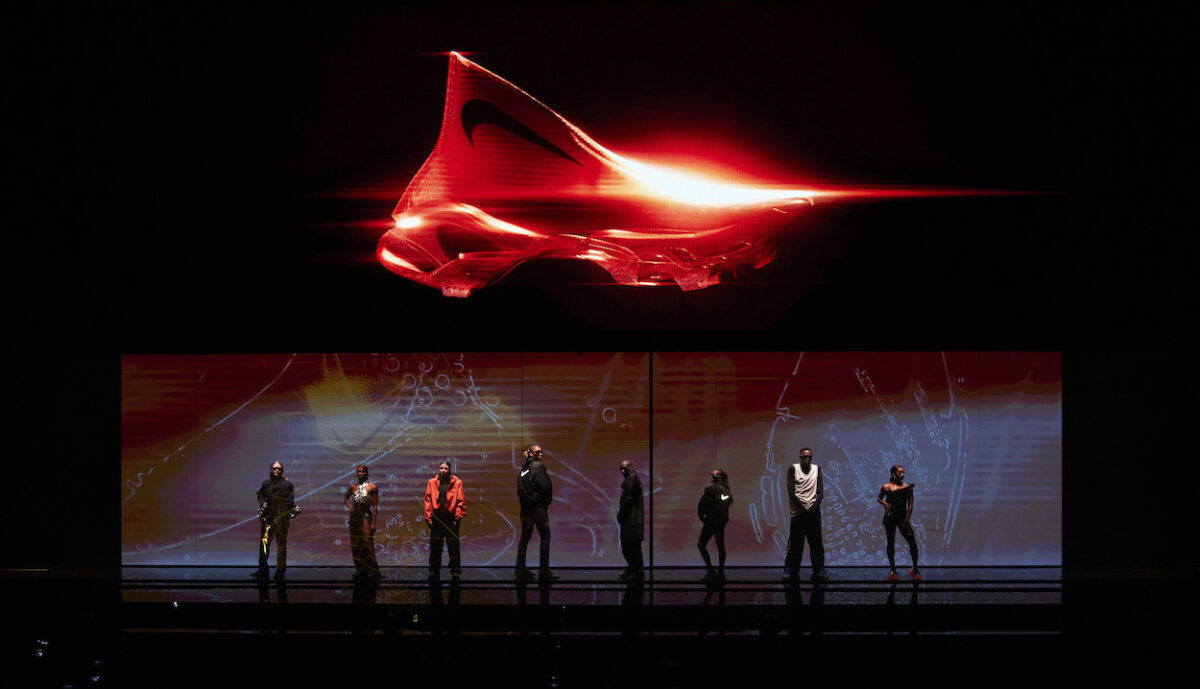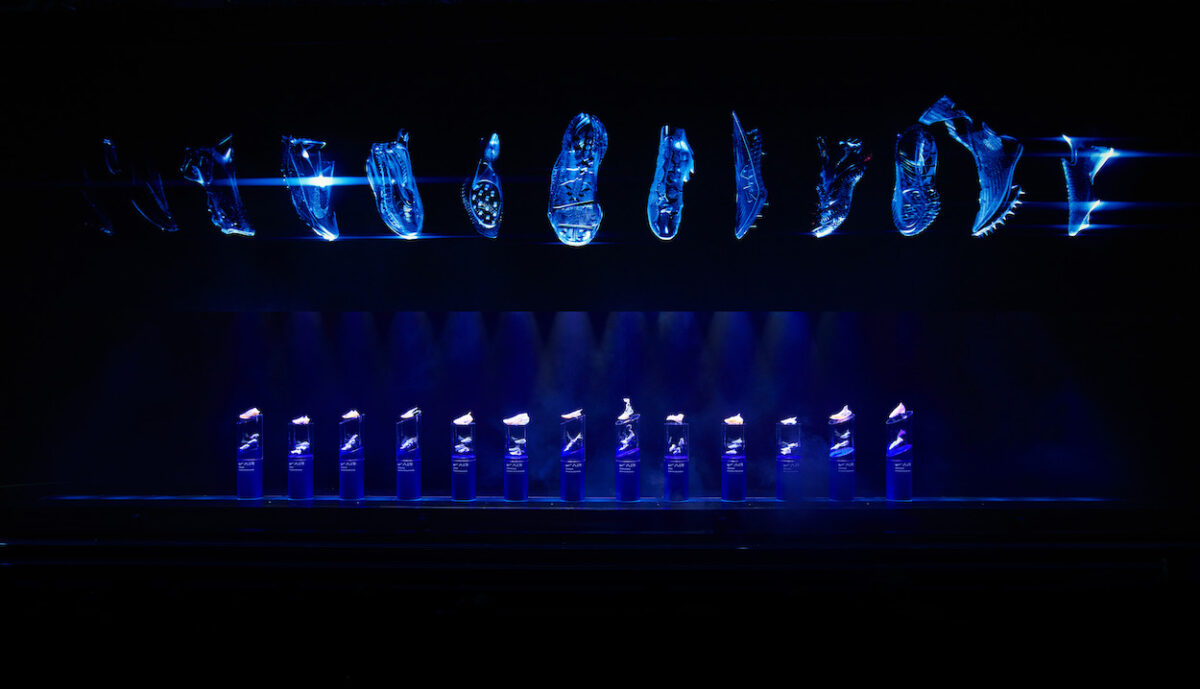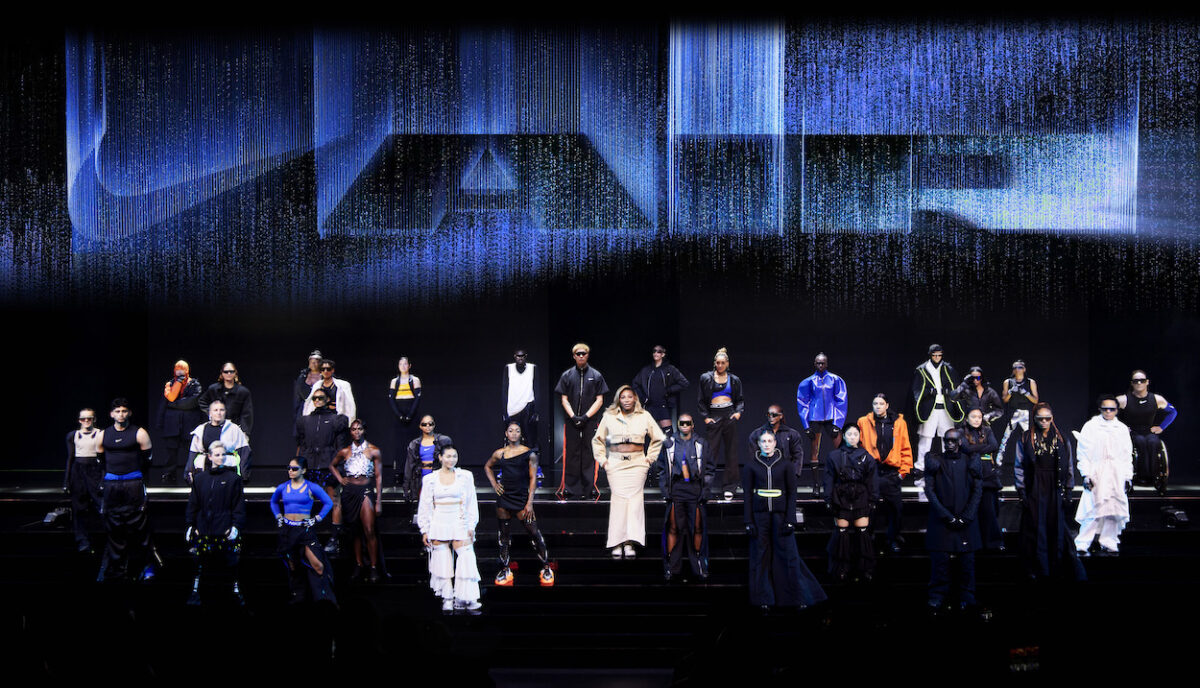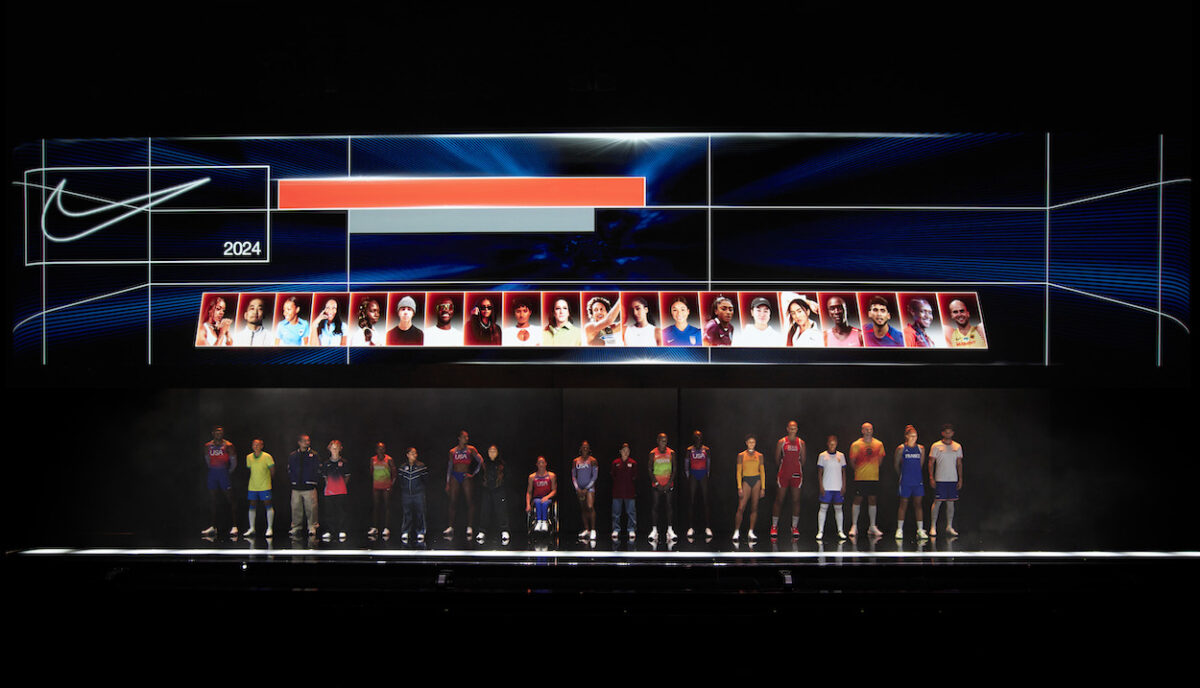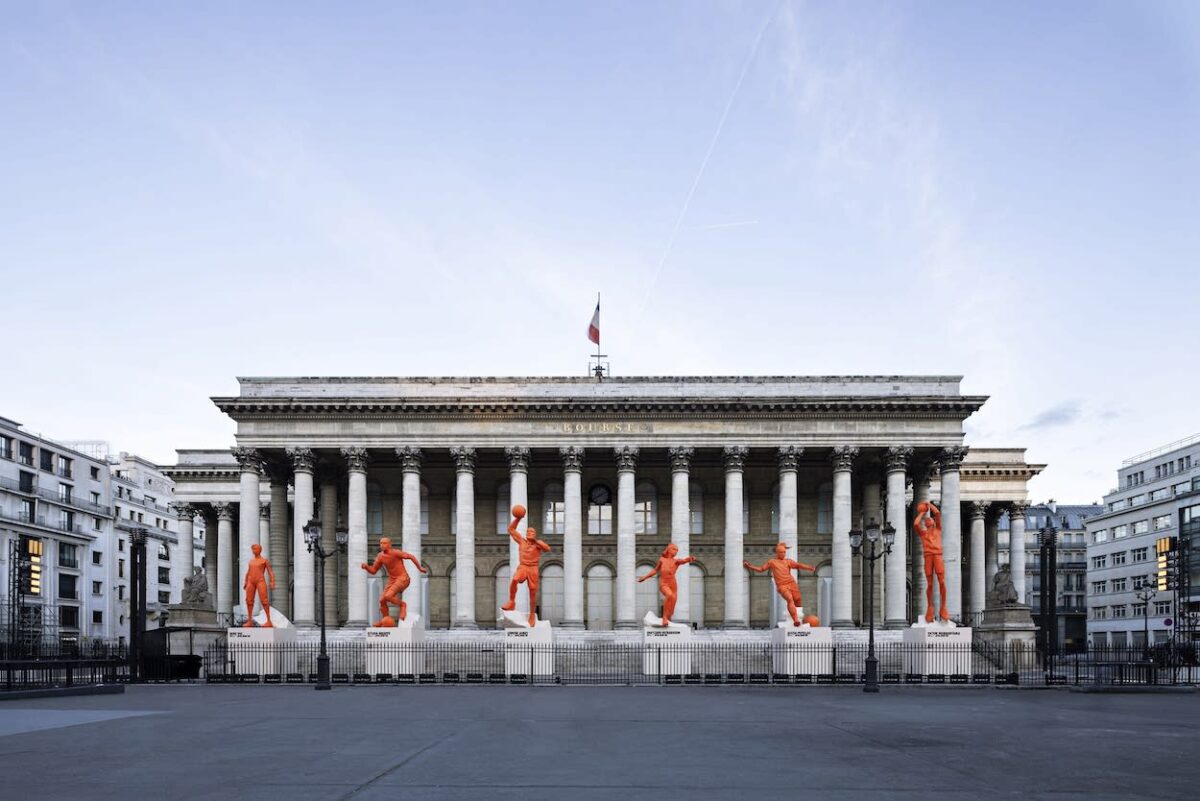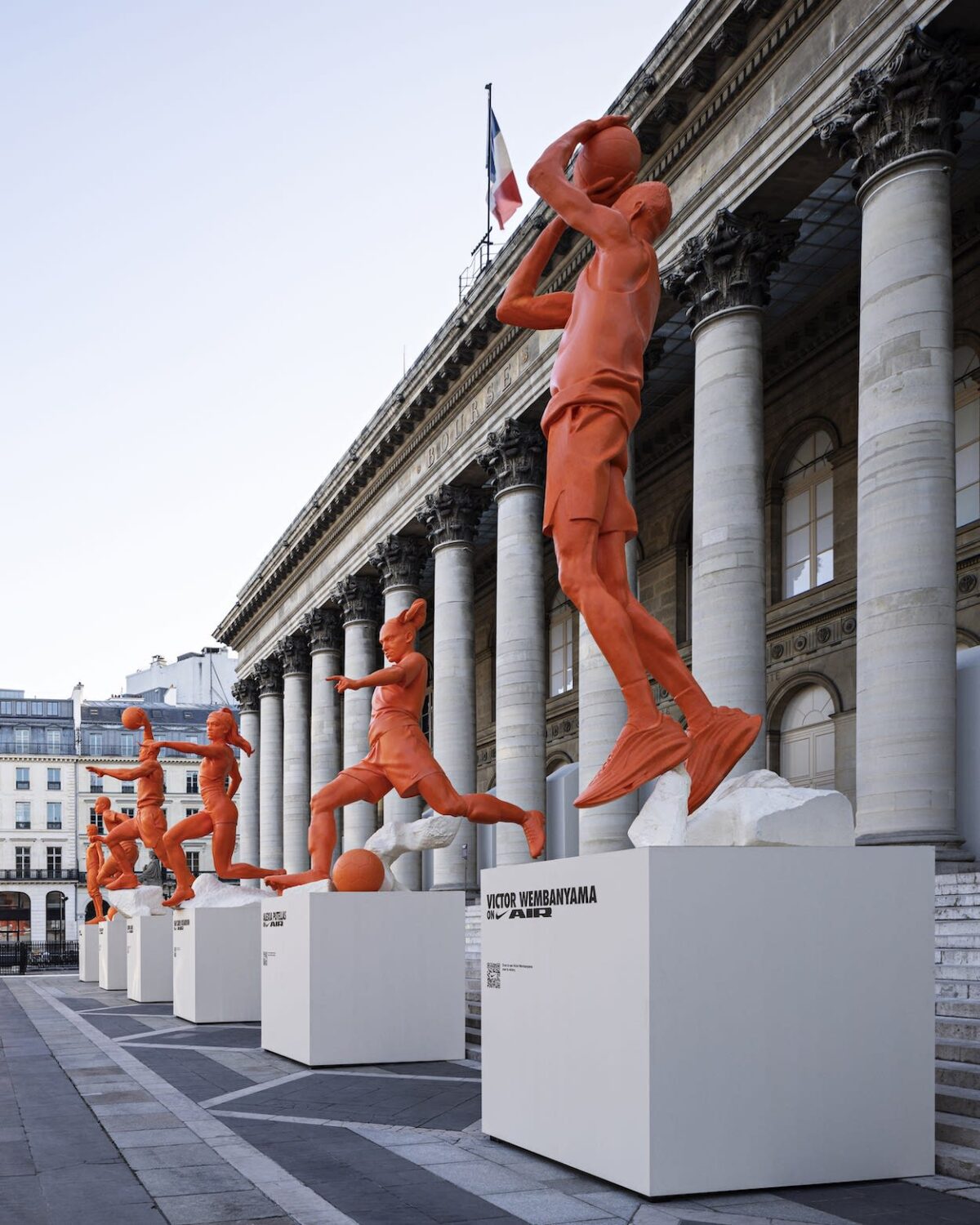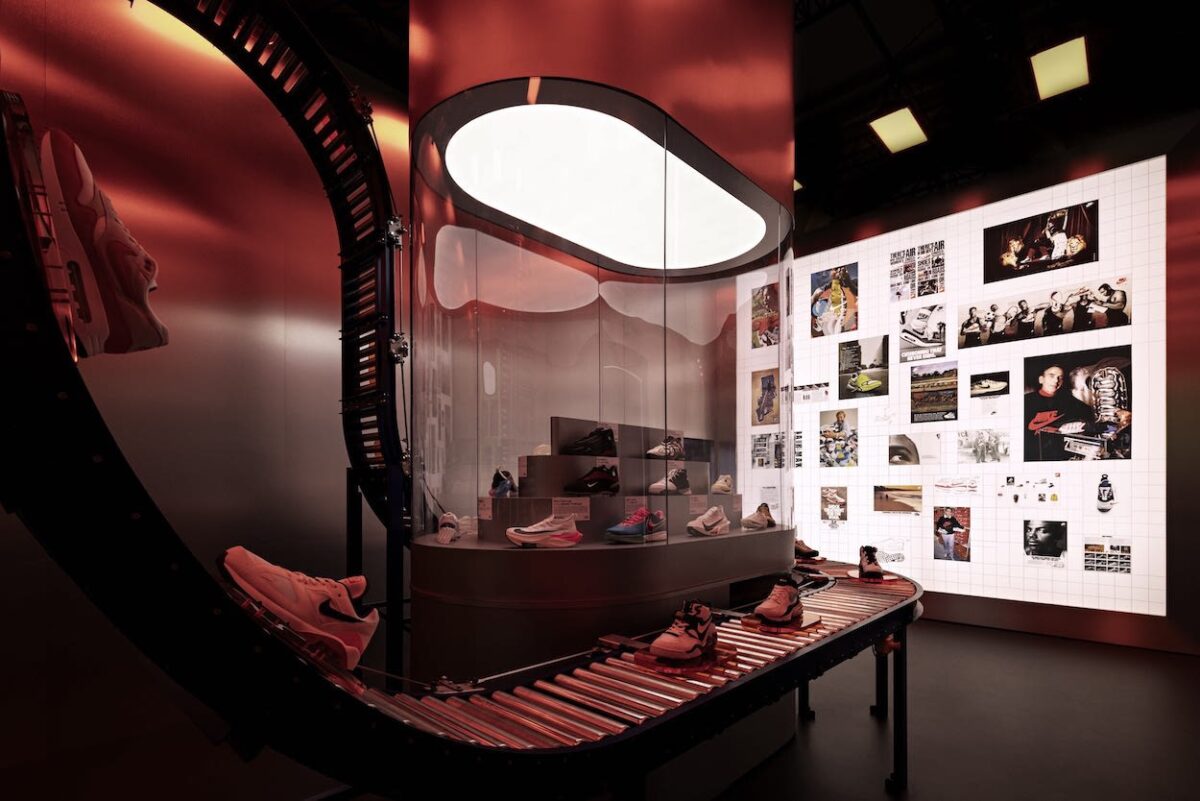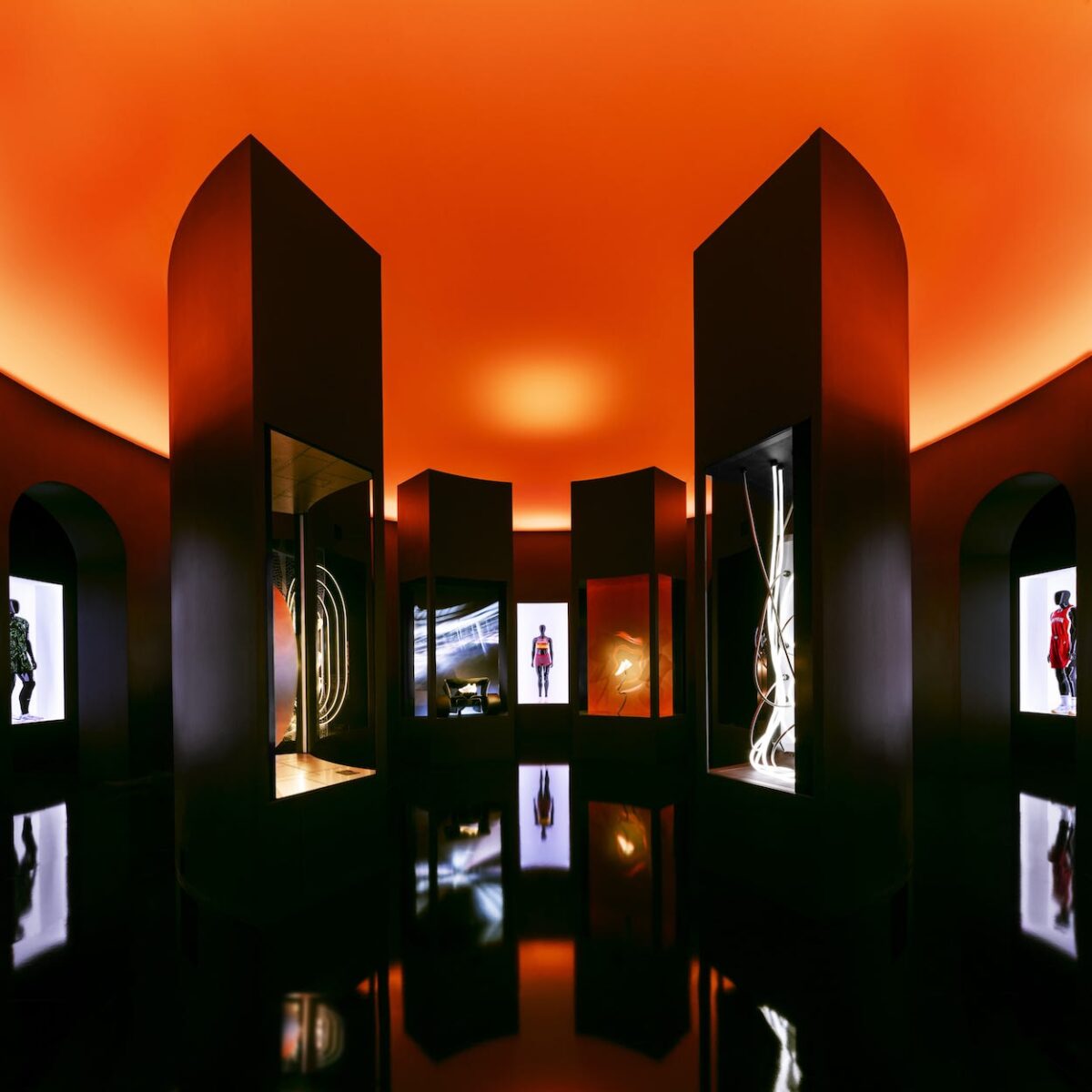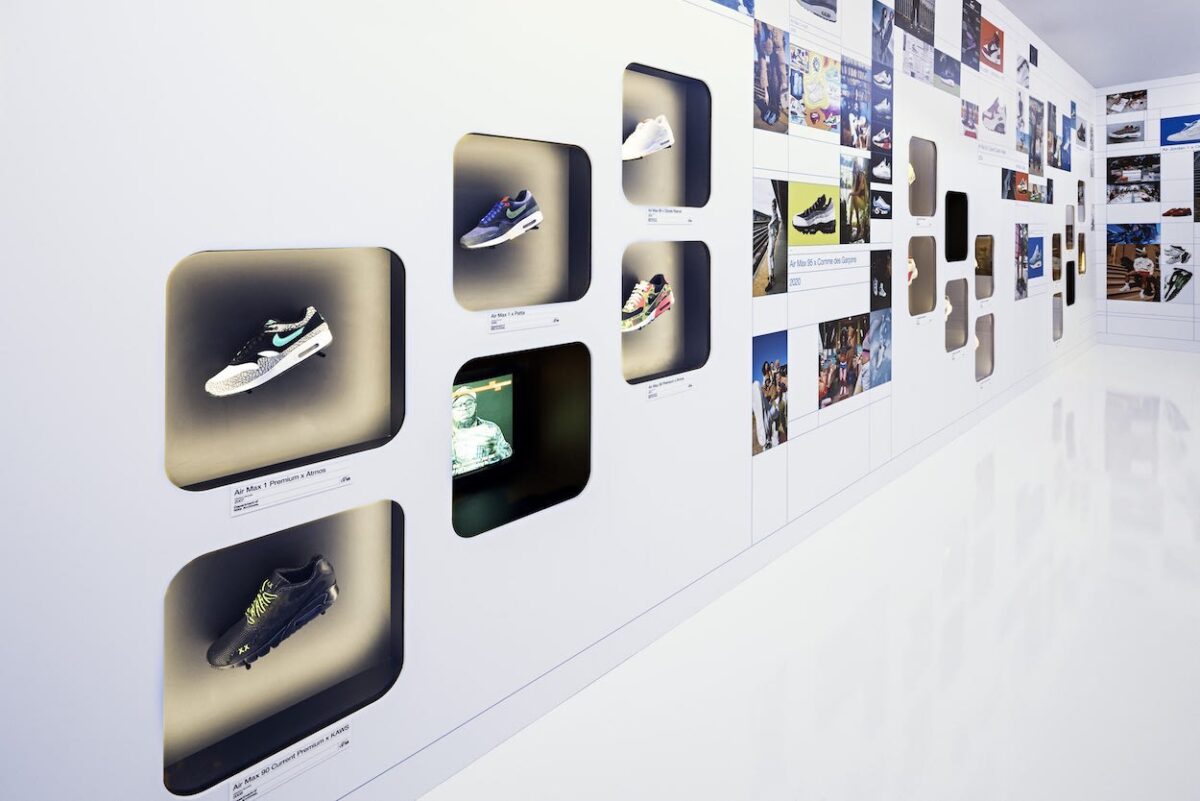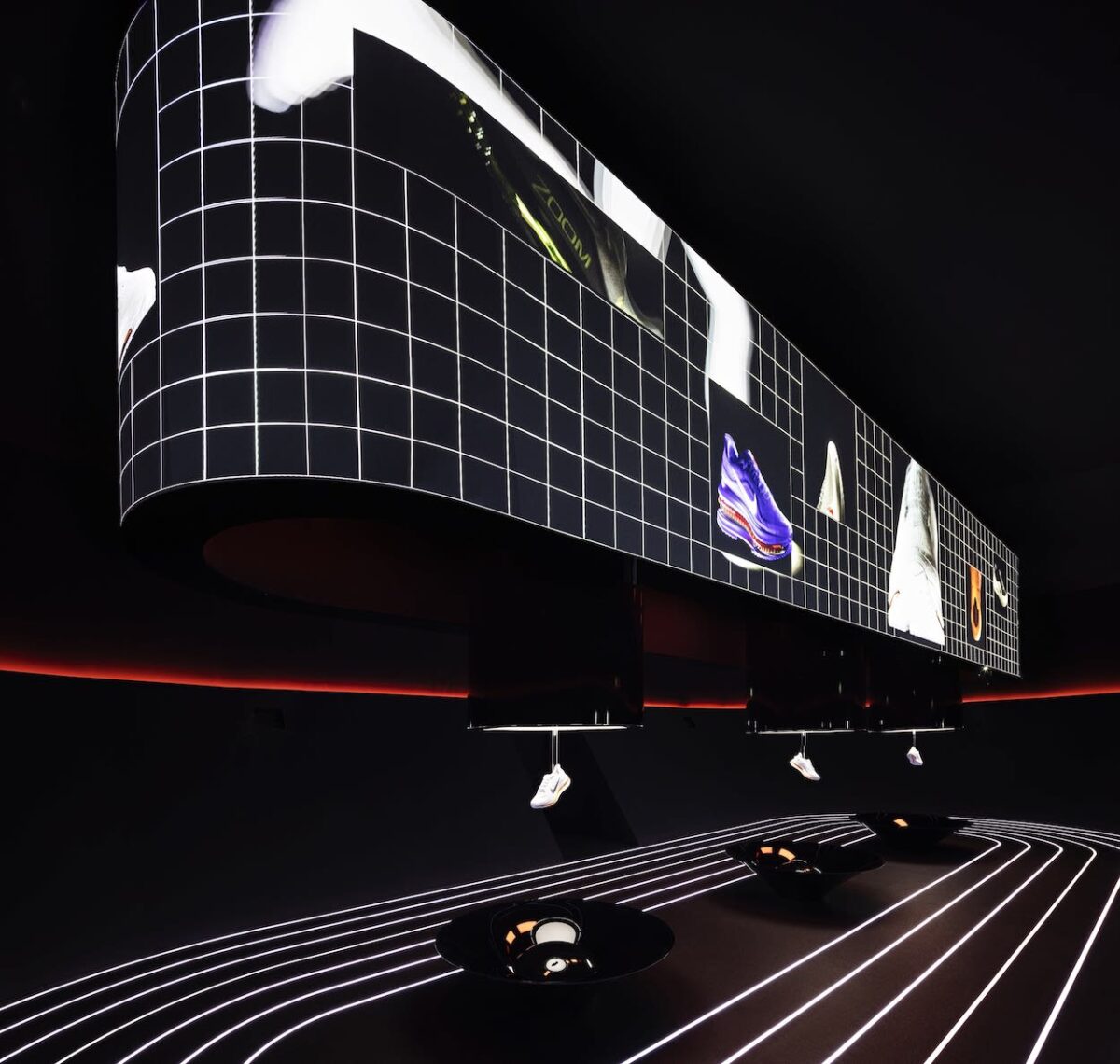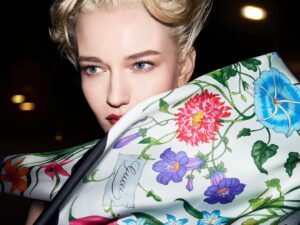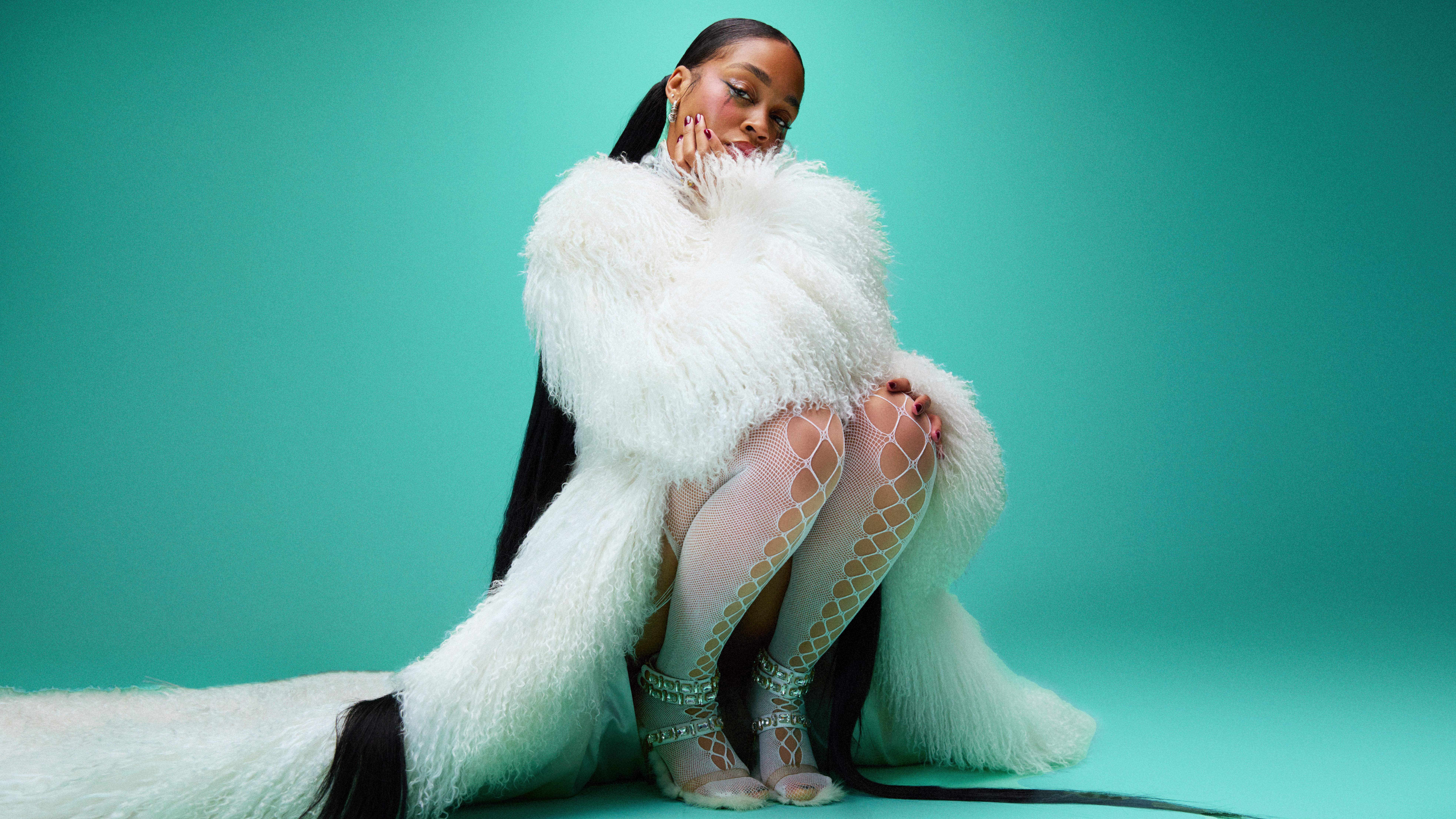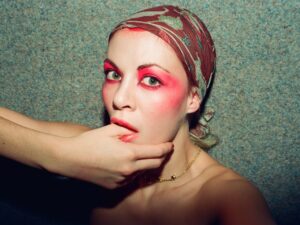Power moves: How Nike is getting ready for the Olympics and aims to champion women and girls in sport.
IN CONVERSATION WITH TANYA HVIZDAK AND KATHY GOMEZ
vor 1 year
This was not just about making noise: Nike is looking back at a
long history of innovation using a timeless design formula but
the global player is also aware of how much a constant
evolution is needed to secure its next chapter of growth. A “Just
do it” is not enough for that, rather needed is a “keep on doing
it over and over and over again” that protects the position Nike
is holding in the industry. In such a powerful and important
year, Nike presents its next steps that include innovations
both in design and culture.
For their “Nike on Air” event last week in Paris, the Palais
Brongniart was staged with an impressive outside set of bright
orange colored, 8 and 11 meters high colossal AR-enabled
statues of six titans of sport: athletes LeBron James, Alexia
Putellas, Bebe Vio, Kylian Mbappe, Sha’Carri Richardson and
Victor Wembanyama. The statues had an augmented-reality
interface that unlocked the athletes in action and their Air-
powered footwear. Inside the palais, Nike showcased its product
innovations in running, basketball, global football, skate,
breakdancing and lifestyle. This included also previews of the
captivating Air products to come, above all the sculpted Air unit
in the new Pegasus Premium, Nike’s biggest breakthrough in Air
since its revolutionary VaporMax line and Alphafly super-shoe
system of speed. The event presented two further highlights:
one was a Nike On Air performance show with forty elite
athletes from around the world –among others tennis player
Serena Williams, sprinter Sha’Carri Richardson and marathon
runner Eliud Kipchoge – unveiling the latest Nike Air footwear
and team kits for the summer – the future of athlete co-
creationa with iconic and visionary looks that highlighted their
self-expression and incredible athleticism. For the show, Martine
Rose designed pieces for Dina Asher-Smith and Sam Kerr, Sacai
for Serena Williams and Yoon Ambush for Bebe Vio. In the finale
of the show, 13 athletes declared their visions of the future of
Air through radical AI-explored, 3D-printed, one-of-one footwear
that Nike’s innovation teams helped bring to life in a project
called A.I.R. — Athlete-Imagined Revolution.
Whereas Mbappé, for instance, wanted “unlimited speed”, Richardson
aimed for “relentless force”.
Nike wants its future to be limitless and that makes a profound
understanding in its cultural power even more important. A big
role here plays Nike’s Athlete Think Tank (ATT 2.0),
a collective of influential athlete voices that help the company support
women and girls in sport. In its second year, Nike’s Athlete
Think Tank expands its collective, bringing together 11 elite
global women athletes to champion the next generation of
female athletes.
Fräulein: How does Nike support female athletes
to push themselves and their limits in general, and then
specifically through products and innovations, such as
AIR?
Tanya Hvizdak: We show up with the athlete, and our goal is to
help make the athlete’s dreams real. And as you think about our
products inherently, how do we help them unlock their human
potential? They provide how far they want to push it, and we
develop what’s going to help them to get there. You think about
Eliud Kipchoge and the Alphafly being the first individual to
break the marathon in under two hours. And some of our
incredible women, who have just even set the world records.
Nike’s role in that is creating a product that allows them to do
that in the arena of sport, and it starts with the insights from
them and the product that we create. The products are the tools
for the athlete and their craft. I think the beauty of us with the
athlete is that partnership that is unlocking human potential.
Which role do female athletes specifically play in taking
Nike’s innovations to the next level?
Tanya Hvizdak: Truly, that’s what I’m most excited about. It’s our female
athletes who I think are helping us accelerate our innovation at
an unprecedented rate. Over the last four years, I’ve had the
honor of working with several of our athletes on a platform
called the Athlete Think Tank, and their voices have really been
integrated into everything that we’ve been doing, but
specifically in product and in services. And they’ve opened up a
whole new aperture for how we look at things, how we design,
how it informs, how we message. And truly, we say, from her,
for all.
What does this mean for the design process and
different approach to innovation compared to the male
world?
Tanya Hvizdak: The conversations that we’re having with some of our athletes,
if you think about even our recent football boot, and how a
woman’s body is just anatomically different than a man’s, the
intent of it was to help with injury prevention. And the
placement of the spikes on the bottom of the boot is
intrinsically made for her, but what we’re finding is a lot of our
male athletes are saying “we’re having similar injuries on turf,
and could that help us from an injury prevention perspective?”
So, you’re starting to see that, just even from a design element
processIf you think . about jerseys and that lighter, more
tailored fit, I’d argue that that’s coming from her. There’s the
other aspect of how our female athletes have brought a style to
the sport that has definitely been accelerated. There’s the
tunnel look aspect and the flair, and I think our female athletes
have made that more appropriate, and then there’s also how
they’re showing up in the arena. Our goal is to really just
elevate female athletes through their authentic voice and
making sure that we’re the partner that makes sure that the
athlete shines.
What makes AIR so special in your point of view?
Kathy Gomez: It’s a lot of things: the versatility of the platform
it presents for self-expression, the performance-optimizing
abilities, the groundbreaking technology that goes into the
innovation. Fundamentally, we love AIR because it works. It
cushions incredibly well and attenuates shock. It’s responsive.
An athlete will get the energy back that they put into it. And it’s
resilient, so it’s going to return to its original shape every single
time. And it’s durable. It doesn’t break down. And so those
characteristics, fundamentally, those superpowers are really
special for an athlete. Then it’s really about the experience and
the expertise of our multifunctional team being able to think
about how do we engineer it? How do we imagine it working in
different ways for different athletes in different sports? And
then, of course, it’s what we put it with. We build it into a
system. Like this, we have the ability to understand it at a very
precise level so that we can engineer a system that works
efficiently. We test and iterate to reach a benchmark or solve a
problem that we’re trying to solve. And AIR continues to work
for us over decades because we continue to innovate and learn
more about it and push the boundaries of what we can do with it.
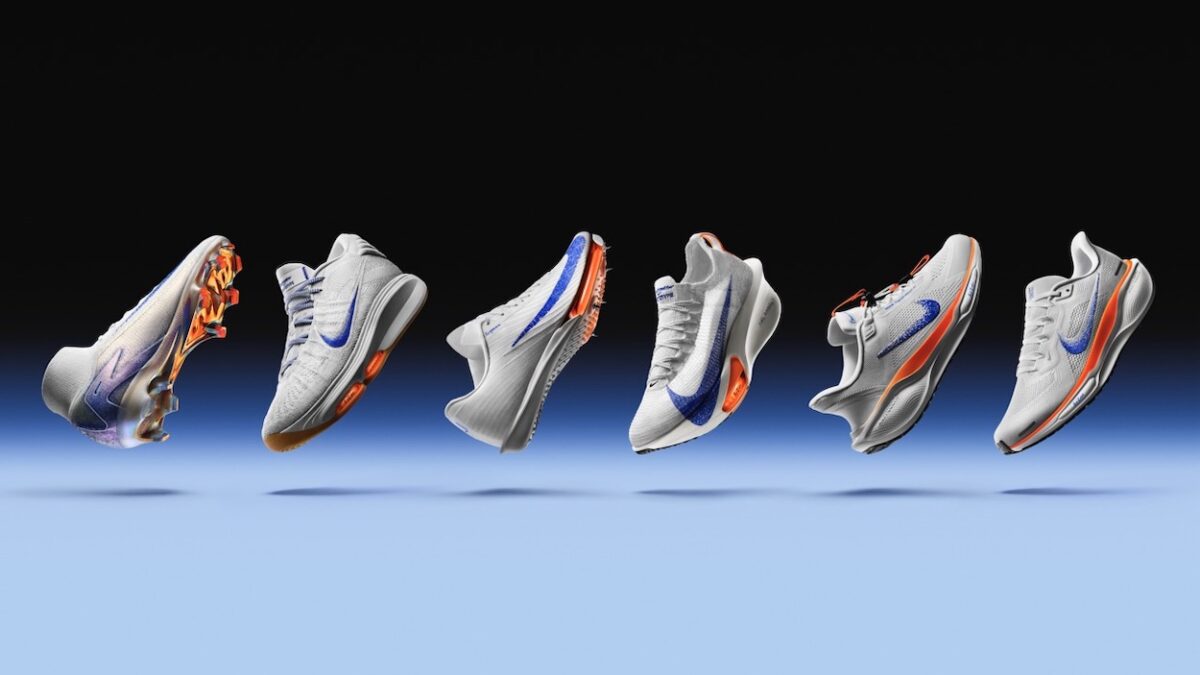
Looking into the future after the newest innovation
platform with the AIR Max DN (Dynamic AIR), how do
you see AIR and AIR Max evolving from here?
Kathy Gomez: AIR continues to evolve. It’s because of the foundation of
understanding and how we’re imagining it into the future. So,
think about DN, that dynamic nature of AIR and it moving is a
really special idea compared with what you just saw in Zoom
curving that Zoom aerosol and changing the shape of it is like a
platform in and of itself to think about how we might shape it,
to perform more specifically for an athlete, to change the
experience, to change the performance, and to change the
aesthetic too. I think ultimately, when we’re at our best, a
product is intuitive because it’s purely designed for an activity.
And so, it’s intuitive, it’s understandable, and it feels good and
the athlete looks good in it. Therefore, they feel good and
therefore, they perform good. All those things coming together
to me is our goal.
AIR influenced some of the most iconic Nike lifestyle
silhouettes and sneaker culture. What are the main
challenges your team faces in bringing a new iconic
silhouette to life, especially considering the legacy that
is linked to AIR and Air Max?
Kathy Gomez: It’s pretty amazing and it’s
such a huge responsibility to think about that you’re a
part of culture. So, that’s where I redirect
my team whenever they feel that pressure of “we have to
create a cultural icon”. For me it’s rather “we have to create
something that works for the athletes, that’s intuitive, and that
does what it says it’s going to do, and that is beautiful”. It’s
going to be inherently beautiful if you make it pure. Then it gets
adopted into culture. Of course, we have our finger on the
pulse. We deeply understand athletes and our team, but it’s not
just about understanding what they want on their feet. It’s
about understanding who they are, what they care about, what
they don’t care about, what they listen to, what they wear, what
they eat for breakfast. It’s about what their life is like and where
they live, what their environment is, and all of that, all of that
influences how we design. If we create something that makes
an impact physically and emotionally on an individual, then it
becomes part of culture. Then they accept it into their world.
Success for us looks like somebody adopting it into their world,
and we really want to bring joy to athletes. We want their
dreams to come true, so whether that’s running as fast as they
ever have or it’s going out for their first run. To me, that’s
success and that’s when you become part of culture.
Interview by Sina Braetz
Images courtesy of NIKE
